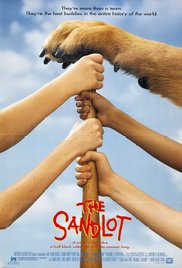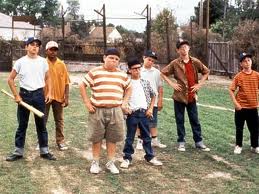QUICK DISCUSSION QUESTION:
What did you learn from this movie that you can use in your own life?
Suggested Response:
There are several lessons from this film. Describing any one of them is a good response. There are probably more that are not mentioned here. One is that it is worth risking embarrassment and rejection to find friends. Think of how much Smalls would have missed if he had stayed in his room that summer. Another lesson is that you should first assume that people will be helpful and considerate. Had the boys just asked for the ball, the old man would have given it to them. Another lesson is that if you have an important goal, don’t give up. The team never abandoned its efforts to get the ball. Another lesson is that practicing a lot will make you a winner. That’s how the team beat the rich kids who had uniforms and a real baseball diamond to play on.
1. See Discussion Questions for Use With any Film that is a Work of Fiction.
2. Smalls’ mother pushes him to find friends out of doors, even though he is not especially interested in sports. What kind of pressure does this put on Smalls and what is revealed in his character by his efforts to meet new friends on the baseball field?
Suggested Response:
Smalls does not want to disappoint his mother and even though he knows he will be embarrassed on the baseball diamond, he pushes himself forward. This shows respect for his mother, resilience, and the ability to take risks.
3. How is baseball tied into Smalls’ efforts to establish a relationship with his stepfather?
Suggested Response:
Smalls’ mother encouraged her son and his new father to practice throwing and catching together, but there was clearly no enthusiasm in this relationship. Smalls’ stepfather owned a prized baseball that had been signed by Babe Ruth and everything grew complicated when Smalls used the prized baseball during a game.
4. What seems to motivate Benny in his efforts to include Smalls’ in the games?
Suggested Response:
Benny simply likes Smalls — and he can always use an outfielder for ball games which are a vehicle for Benny to practice his skills. With Smalls, the team will have nine players. Benny behaves with respect and fairness toward every boy on the team. He shows patience and generosity. Benny is one of those rare persons whose maturity easily translates into leadership.
5. The imaginative and creative side of young boys can be seen in the way they behave in two episodes in the film. What is imaginative and creative in the scene involving the sleepover and the efforts to get the ball from the dog known as “the Beast”?
Suggested Response:
At the sleepover, the tall tale of the Beast is recited and the story serves to hold the boys together. There are several attempts to retrieve the baseball involving contraptions made from scraps of tin, vacuum cleaners, and devices using ropes to lower one of the boys into the yard.
6. What ironies can be found in the way the film ends?
Suggested Response:
The boys learn that the Beast is not a mean dog after all and that his owner, Mr. Mertle, used to play baseball in the Negro Leagues and had been a friend of Babe Ruth. Although Mr. Mertle was blinded by a stray pitch back when he played, he is able to see into the problems Smalls faces with his stepfather. He offers the solution to the problem by giving Smalls his “Murderer’s Row” ball, signed by the best Yankee players in the team’s prime. In exchange, the boys will visit with the old man and talk baseball. At the end of the film, Benny is a star baseball player and although Smalls never became a good player, he learned enough in his days in the sandlot to establish a fine career as a sports broadcaster.



